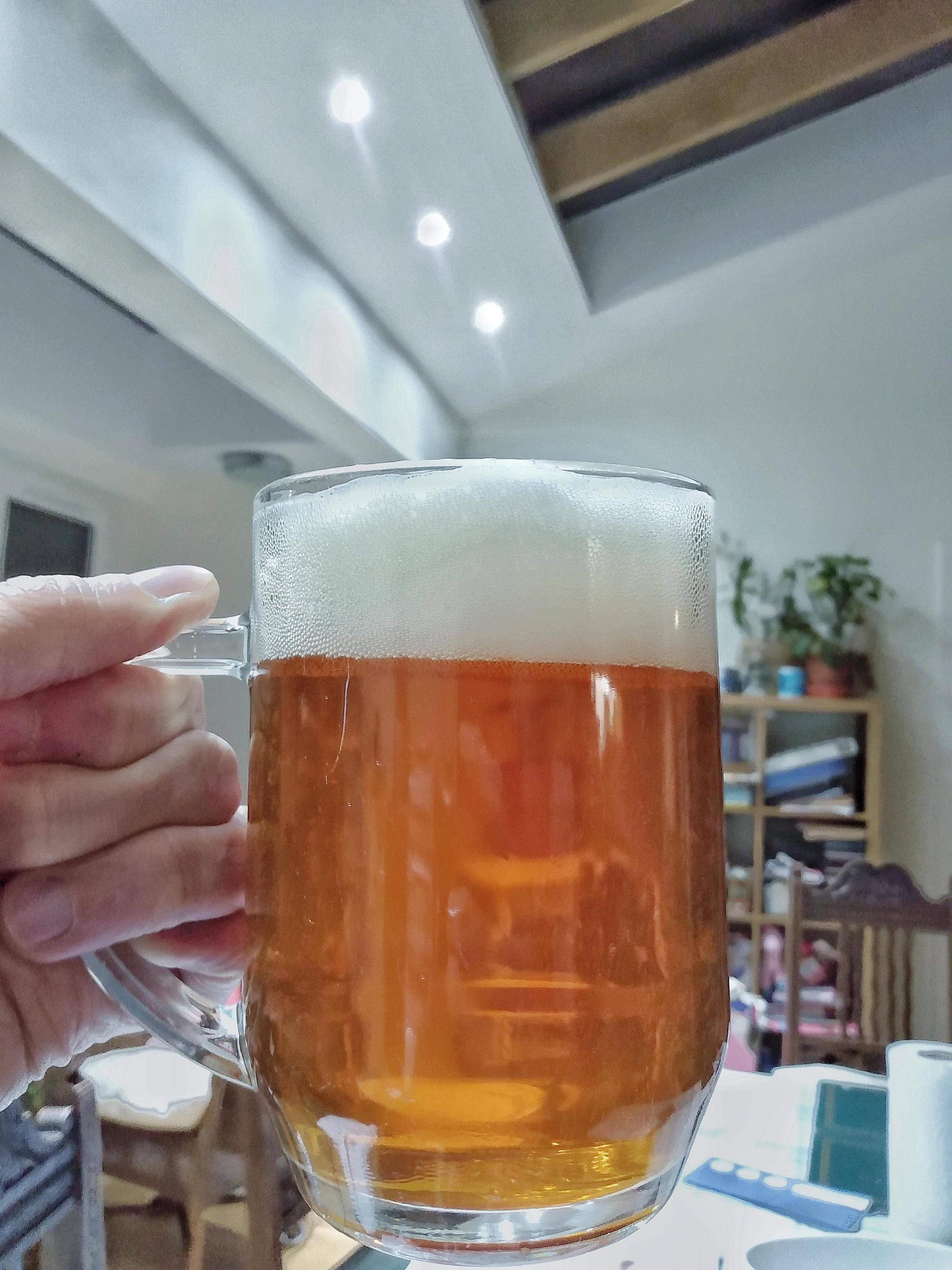moreb33rplz
Well-Known Member
- Joined
- Mar 25, 2014
- Messages
- 685
- Reaction score
- 379
My first pale ale with Verdant has been in the keg about 10 days now and isn't clearing up very much. Is this common with the yeast?

Little 4.5% Nectaron/Mosaic beer I made with Verdant that’s been in the keg now for 8 weeks. Still wonderfully aromatic with permanent haze stability. Great yeast for little beers as the added sweetness definitely helps the body. This is by far the best dry yeast for making modern, more fruit forward, hoppy beer.
View attachment 705996
Additional sweetness? what was the FG?
I just kegged mine, the character is good for hazy pales or similar. But I have found that the OG was quite high 1.017 for this one - 1.053 - 1.017 = 4.7%
I had hoped for 1.013/14.
Has anyone had this, the beer had carapils in it (just over 1/4lb), mashed low.
My first pale ale with Verdant has been in the keg about 10 days now and isn't clearing up very much. Is this common with the yeast?
Does this one bring the typical English ale type of esters?










Thanks!I did a bitter that has taken a month to clear. I only use copper finings. Initially I thought it would drop quickly, but it took a long time - that was at 12c.
I have only used it once in that bitter, it has made a very nice beer. In fact I'm quite impressed with it for a dry yeast, I usually don't like them for smaller traditional british style beers finding them a bit bland or not to my taste. I only really like something like nottingham for burtons/strong stouts or something like bry97 or us05 for golden ales
It however does have a vanilla aroma which I have not had before from english yeasts, but it did seem to work with the beer. If you are set on dry yeasts for small british beers then I would recommend it over the others available.
verdant IPA bitter, one month in the bottle

Does this one bring the typical English ale type of esters?
That’s just standard for 1318. It’s just softer and sweeter than most yeasts across comparable gravities.
1/4lb of Carapils shouldn’t have prevented that beer from attenuating. I use 1lb in beers of that size and they generally always get to 1.012/1.013. Something else must be at play.
I was wondering the same thing.
I just can't figure out what caused it, if anything. My calculations were all around 1.014 as a maximum, its just unfortunate i guess.
i have a bunch of packs still, so can keep trying.
I'm planning to do a 10L batch of Verdant pale , OG around 1.055, no DH. Will a 12L fermenter give me enough headspace? How tall does the krausen tend to be (planning to ferment around 20C/68F)?

Hop creep caused it. You’re adding hops with enzymes into the beer during fermentation. Those enzymes are breaking down sugars making the wort more fermentable.
I’ve had 3-4 points of hop creep before. Usually on IIPA’s. The higher the FG before adding dry hops, the more likely it is to have more hop creep. Had a double that dropped from 1.016 to 1.012.I agree, but i don't think it's 3 OG points worth of hop creep (1 is normal for me at most).
I mashed at 165 one time and then fermented out the beer. Added dry hops and it kicked off fermentation again. I dropped over 10 points! Hop creep can bring you down really far.I’ve had 3-4 points of hop creep before. Usually on IIPA’s. The higher the FG before adding dry hops, the more likely it is to have more hop creep. Had a double that dropped from 1.016 to 1.012.
I always mash for attenuation anyway, but definitely mash for attenuation in beers that are going to be dry hopped. Otherwise you can end up with restarted fermentations like this.I mashed at 165 one time and then fermented out the beer. Added dry hops and it kicked off fermentation again. I dropped over 10 points! Hop creep can bring you down really far.
in my most recent ipa i used a .3 g/L pitch (rehydrated) fermented at 72°F the entire time. was relatively pleased with it -- perhaps still not as estery as i'd have liked, but a significant improvement over previous ferments within the recommended pitching rate that fermented around 66-68°FIs there a consensus on fermentation temps to pull more of the fruity esters for this yeast?
What attenuation did you get?in my most recent ipa i used a .3 g/L pitch (rehydrated) fermented at 72°F the entire time. was relatively pleased with it -- perhaps still not as estery as i'd have liked, but a significant improvement over previous ferments within the recommended pitching rate that fermented around 66-68°F
82% - i've consistently gotten attenuation similar to this at regular pitch rates and lower temperatures as well though. doesn't seem to be hop creep either; gravity remains stable post- soft crash and dry hop.What attenuation did you get?
Interesting, I'm getting consistant 73% attenuation with 20% adjuncts. I thought underpitching might effect this. Will give it a try.82% - i've consistently gotten attenuation similar to this at regular pitch rates and lower temperatures as well though. doesn't seem to be hop creep either; gravity remains stable post- soft crash and dry hop.
What are you using to measure the SG? I found it to be very vigorous in fermentation and no hint of giving up early.
Also say what your grain bill was, OG etc etc.